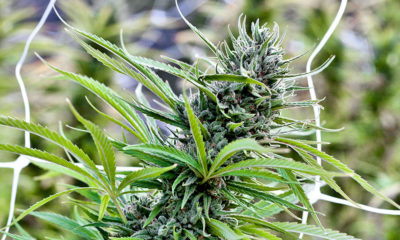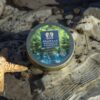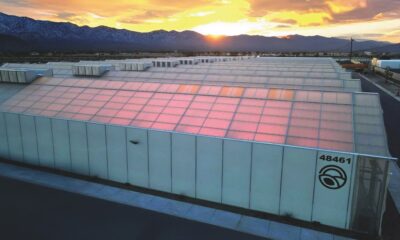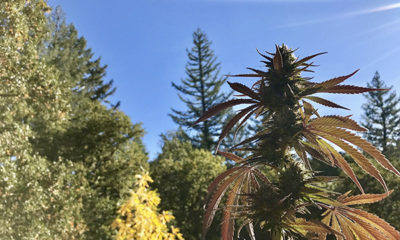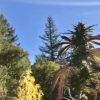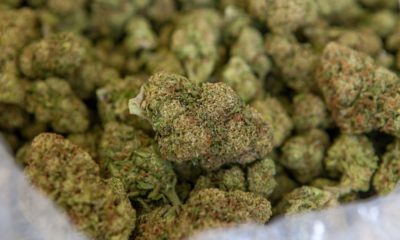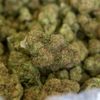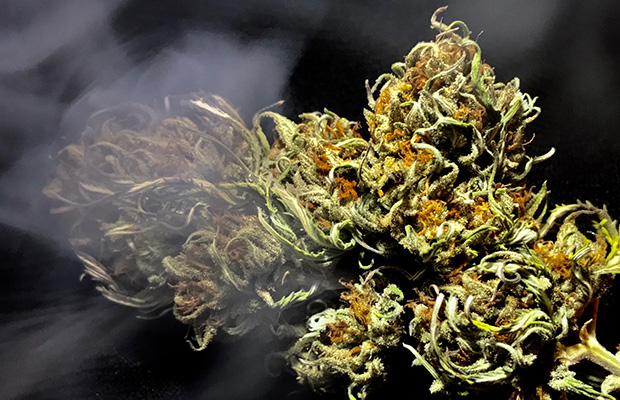
Joint Opinions
An Unusual Harvest Season
Climate change is impacting the harvest season of cannabis in California.
This has been a most unusual harvest season in the Emerald Triangle. First of all, after such a wet year in 2016 — when rains started in late September and went until early June — everyone expected the same thing this year. Humans are such creatures of habit. Clearly we have yet to fully accept that climate change is real. As the weatherperson is prone to say, “Expect increasing frequency of random catastrophic meteorological events.” In other words, anything can happen.
Last year it was the same thing only different. The drought had become such a constant reality that no one foresaw the rains that poured right through October, leaving lots of mold and mildew on cannabis plants in their wake. Drying rooms were not properly prepared and you couldn’t find a dehumidifier between here and San Francisco. Naturally, we went out and bought two beautiful new de-hues this year to be ready and we have barely used one of them. Surprise surprise, it’s been a gorgeous dry harvest season with perfect curing weather so we really can’t complain.
The other unique aspect of this season is of course the horrific fires which raced through Sonoma, Napa and Mendocino counties. While Sonoma and Napa were devastated, including a fair amount of their 2017 cannabis crop, greenhouses and processing buildings, Mendo’s cannabis farmers were also hit hard. The damage was primarily in Redwood Valley and Potter Valley, areas in the southeast part of the county. Entire communities experienced the trauma of being evacuated, while worrying about their homes, animals and plants left behind in the rush. The unfortunate ones lost everything; eight people died.
Living beings have been teased and tortured by fires in Mendocino County since time immemorial. The forests are dense and often run deep into narrow mountain valleys making it difficult to fight fires. We have experienced several summers with the fear of a flare up somewhere nearby, it doesn’t take much at all when it is so hot and dry, almost crispy. I don’t like to even think the word “fire.” But those conflagrations were different from what happened this October.
In the June 2008 the Mendocino Lightning Complex Fires started on June 21, consumed nearly 55,000 acres and only two structures (a residence and an outbuilding) and unfortunately a volunteer firefighter died. But the fuels which spread the fires were timber, brush and grass. Thick dark smoke hung in the air for weeks, but it was still early in the season, no plants were in flowers and that was “clean wood smoke.” This was quite different from the toxic stew which comes from a high percentage of burning buildings containing all the other manufactured “stuff” we humans think we need, a majority of which is made from some combination of plastic petroleum chemical ingredients.
Cal Fire reports that in the Mendocino fires this past October 36,523 acres burned. In Redwood Valley and Potter Valley, 545 homes were destroyed and 43 damaged. This is a much higher percentage of homes to acres burned than in the 2008 fire. All the toxic chemicals mixed together to create a dark and dangerous cloud that spread across the entire southern region. Our ranch is in far northern Mendocino County and the deadly winds were blowing strongly from the north, so we only experienced some smoke for maybe 24 hours. Yet a feeling of compassion and sense of loss enveloped us all, as just about everyone knows someone who lost everything in the fires.
Just thinking about the lonely buds still on the branch, sizzling in the intense heat and foul air, makes me want to cry.
Evacuated farmers were not allowed back onto their properties for several days. I can’t even imagine the feeling of knowing your flowering girls are out there with no water, enveloped in smoke at the height of harvest season. It could not have come at a worse time. Several people cut their plants early to get them inside, yet the cloying smoke seemed to seep in everywhere. Now the big worry is what did the smoke do to the finished bud that did survive? Certainly toxic ash was circulating in the air everywhere for days and fell onto the unharvested flowers. How clean can they be?
The height of unfairness is for the cannabis farmers who were burned. For the few on the road to legality, they are most probably like the many of us right now: at a point in the process of coming into compliance of having spent most of their funds to cover licenses, professional fees, permits, taxes and all the myriad expenses being thrown at us all at once. But these folks are burned out with no insurance and no crop left to help cover costs. What they do have is an incredible community coming out to help in every way. What else can we do?
So, on top of the fires and surprising dry weather, there are yet several looming questions: What happens when it is really legal in California? Is this the last year we can enjoy the process of drying, trimming and curing on our own ranches, unless we have commercial-permitted buildings with ADA toilets and all the other permits? How do we get our product to the stores after Jan. 1? Will our county, which is naturally distracted by the disasters from the fire, actually issue any more permits before the new year? Does it matter? How do I have to package my product once it is officially recreational? Ah, life used to be so simple!
It is with all this on our minds that we have made our way through what has actually been a stupendous harvest season. The days have been warm and dry, for just long enough to get everything cut and inside without any pathogens forming. Those of us fortunate enough to have been out of the tainted smoke’s path are discovering delicious terpenes and generous crystals on our buds. Sometimes the only thing to do is revert to the old hippie adage: Go with the flow. We just have to have faith it will all work out, that sungrown cannabis from the wilds of the Emerald Triangle will exist forever.
TELL US, have you ever tried to grow cannabis?



